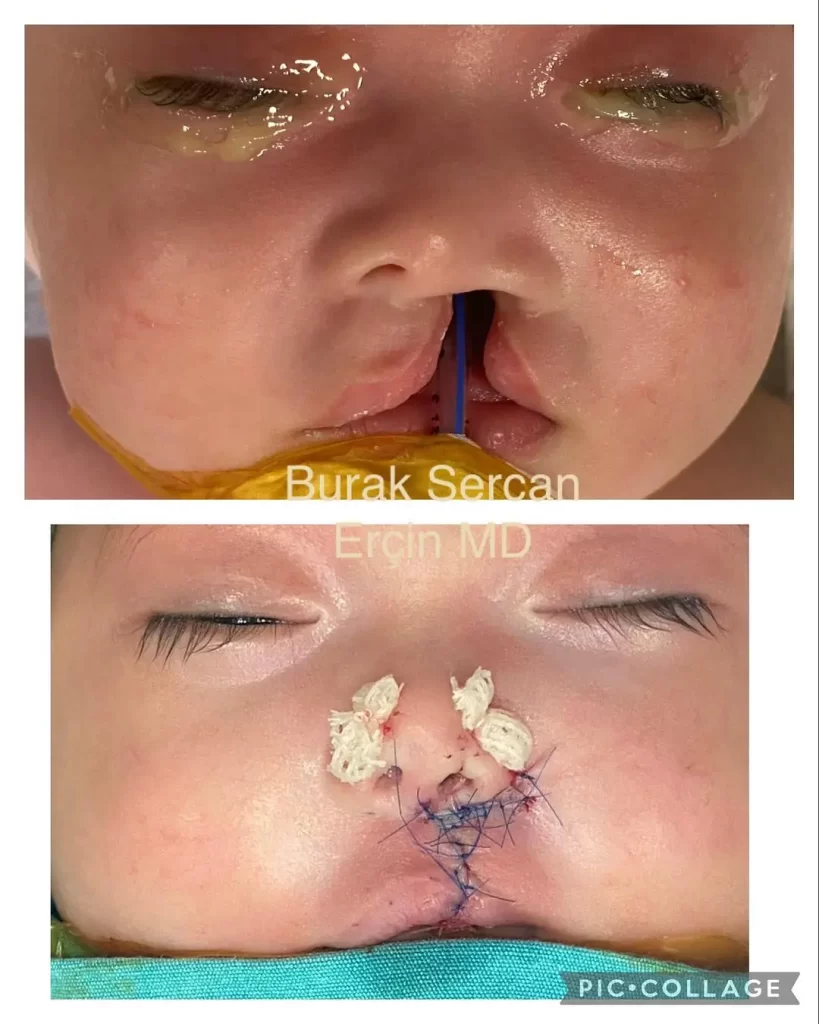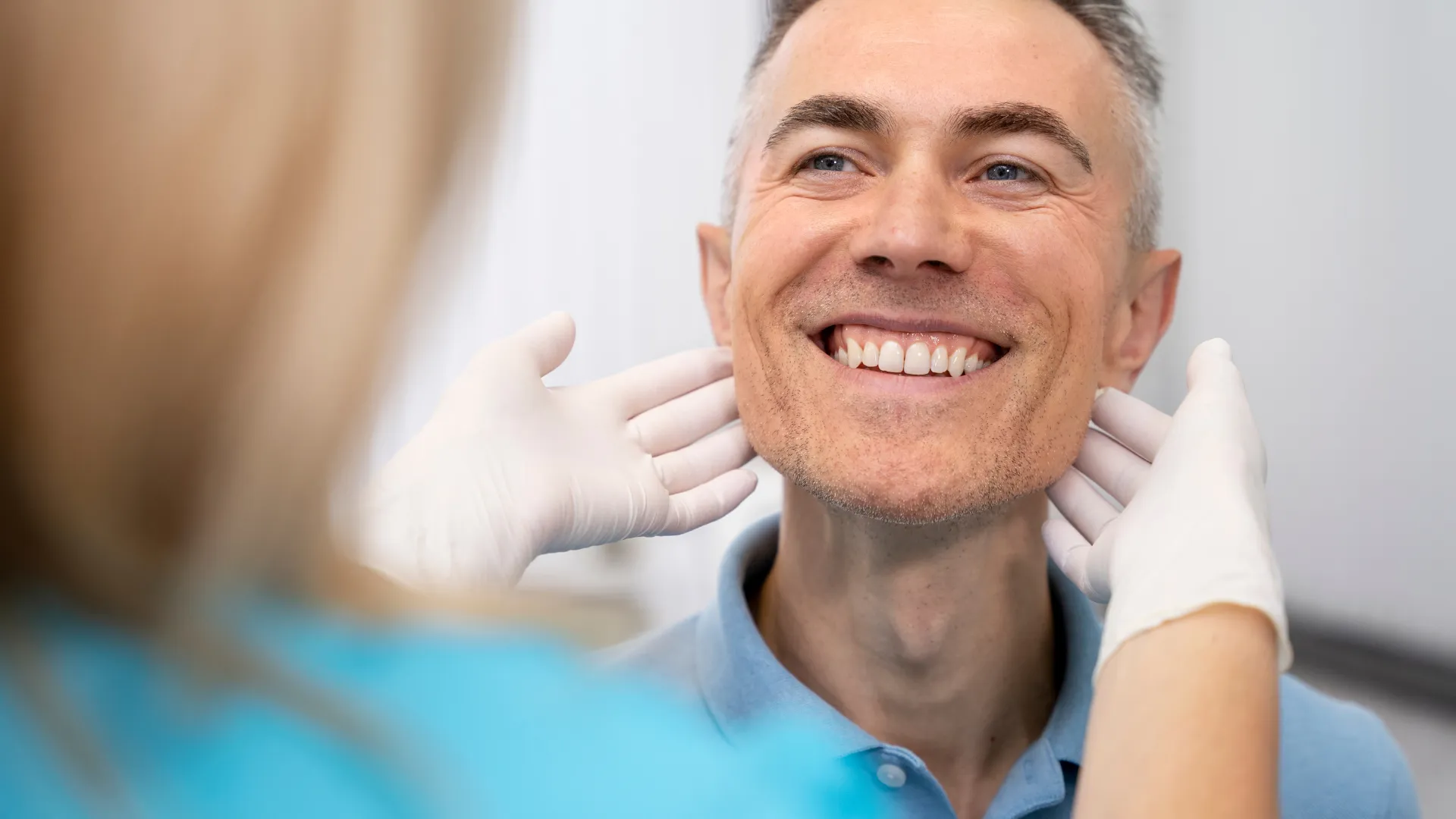In short, cleft lip and palate are common congenital anomalies that affect the facial structure. These conditions occur early in fetal development when the tissues that form the lip and palate do not fuse together properly. As a result, a gap or cleft forms. The severity of the cleft can vary from a small notch to a complete separation that extends to the nose and gums.
Cleft lip and palate repair surgeries aim to fix and restore the affected areas, improving overall function and appearance. The surgical procedures involve closing the cleft and reconstructing the lip, palate, and nasal structures. These procedures are typically performed in stages, with the initial surgery for cleft lip usually performed between 3 to 6 months of age, followed by cleft lip and palate repair between 9 to 18 months.
What Is a Cleft lip and Cleft Palate?
A cleft lip is a separation or gap in the upper lip, which can extend to the base of the nose. It can occur on one or both sides of the lip, and in some cases, the cleft may also affect the gums and the bones of the upper jaw.
On the other hand, a cleft palate is a gap or opening in the roof of the mouth, which can vary in size and severity. It can involve the soft palate (the back portion) or the hard palate (the front portion), or both. A cleft palate can affect a child’s ability to eat, speak, and even breathe properly.
What Is the Difference Between Cleft Lip and Cleft Palate?
While cleft lip and cleft palate may appear similar, they are distinct conditions with different characteristics. Cleft lip affects the upper lip, while cleft palate affects the roof of the mouth. However, it’s not uncommon for a child to have both a cleft lip and palate, which can significantly impact their facial structure and oral health.

What Causes Cleft Lip and Palate?
Cleft lip and palate can be caused by a combination of genetic and environmental factors. While the exact cause may vary from case to case, some common contributing factors include:
Genetic Factors: Certain genetic mutations or variations can increase the likelihood of cleft lip and palate. These genetic factors can be inherited from one or both parents or may occur spontaneously during fetal development.
Environmental Factors: Various environmental factors can play a role in the development of cleft lip and palate. These may include exposure to certain medications, drugs, or toxins during pregnancy. Maternal smoking and alcohol consumption during pregnancy have also been associated with an increased risk of these conditions.
Nutritional Factors: Inadequate maternal nutrition, particularly a deficiency of folic acid, during early pregnancy has been linked to an increased risk of cleft lip and palate. It is crucial for expectant mothers to follow a well-balanced diet and take prenatal vitamins containing folic acid to support proper fetal development.
Other Factors: Cleft lip and palate can occasionally occur as part of a larger syndrome or genetic condition, as mentioned earlier. Additionally, factors such as maternal age, certain infections during pregnancy (rubella), and certain medications or treatments used during pregnancy (anticonvulsant medications) may contribute to the risk.
What Do Cleft Lip and Palate Surgery Fix?
Cleft lip and palate surgeries aim to address the challenges associated with these conditions, offering functional and cosmetic improvements. Treatment of cleft lip and palate can:
- Restore normal lip and facial structure, improving facial aesthetics and symmetry.
- Repair the separation in the lip and close the gap, allowing for proper lip function and enhancing speech development.
- Reconstruct the palate, allowing for proper speech production, swallowing, and preventing food and liquids from entering the nasal cavity.
- Improve oral health by reducing the risk of dental issues, such as tooth decay and misalignment.

How to Care After Cleft Lip and Cleft Palate Surgery?
Proper care after cleft lip and palate treatment is essential for a smooth recovery. Here are some important considerations for post-operative care:
Eating and Drinking After Cleft Lip and Cleft Palate Repair:
- Follow your doctor’s instructions regarding diet and feeding techniques.
- Feed your child with care, using specialized bottles and nipples designed to assist in proper feeding and prevent any discomfort or complications.
- Ensure that your child is positioned upright during feeding to prevent aspiration and promote optimal swallowing.
Incision Care After Cleft Lip and Cleft Palate Repair:
- Keep the surgical incision site clean and dry as per the instructions provided by your doctor.
- Avoid touching or picking at the incision area to prevent infection or delayed healing.
- Follow the recommended wound care routine, which may include gentle cleansing with mild soap and water or a prescribed antiseptic solution.
Pain Management After Cleft Lip and Cleft Palate Repair:
- Your doctor may prescribe pain medications to manage any discomfort following surgery. Administer them as directed and ensure you understand the proper dosage and frequency.
- Use cold compresses or ice packs on the surgical site to help reduce swelling and alleviate pain. Remember to wrap the cold pack in a cloth to prevent direct contact with the skin.
How Long Do Cleft Palate and Cleft Lip Surgery Take to Heal?
Recovery times may vary depending on the individual and the extent of the cleft. It’s important to understand the general healing process and have realistic expectations. Here is a general timeline:
Cleft Lip Surgery: The initial healing process usually takes around two weeks. During this time, swelling and bruising will gradually subside. Stitches or sutures used during the surgery will be removed within 5 to 7 days.
Cleft Palate Surgery: Recovery after cleft palate surgery may take longer, typically around four to six weeks. During this period, it’s essential to follow all post-operative care instructions diligently. Your doctor will monitor the healing progress and provide guidance throughout the recovery process.
It’s important to note that while the initial healing may occur within a few weeks, complete healing and the achievement of optimal results may take several months or even years. Regular follow-up appointments with your doctor are crucial to monitor progress, address any concerns, and ensure the best possible outcome.
What Are the Syndromes Associated with Cleft Lip and Palate?
In some cases, the problem may be associated with certain syndromes or genetic conditions. It’s important to be aware of these associations as they can help guide treatment of cleft lip and palate and management plans. Here are some syndromes commonly associated with cleft lip and palate:
Pierre Robin Sequence: This syndrome is characterized by a small jaw (micrognathia), a cleft palate, and a tongue that falls back towards the throat, potentially causing breathing difficulties. Cleft lip may or may not be present.
Van der Woude Syndrome: This genetic condition is marked by the presence of pits or small depressions near the center of the lower lip, along with cleft lip and/or cleft palate.
Stickler Syndrome: Individuals with Stickler syndrome may have a cleft palate in addition to other features such as joint problems, hearing loss, and vision issues.
Treacher Collins Syndrome: This syndrome affects the development of facial bones and structures, resulting in underdeveloped cheekbones, jaw, and ears. Cleft palate can occur along with other facial abnormalities.
22q11.2 Deletion Syndrome (DiGeorge Syndrome): This genetic disorder can lead to various health issues, including cleft palate, heart defects, immune system problems, and developmental delays.
How to Prevent Cleft Lip and Palate During Pregnancy?
While not all cases of cleft lip and palate can be prevented, there are steps expectant mothers can take to reduce the risk. It’s important to remember that prevention methods are not guaranteed to eliminate the possibility of cleft lip and palate, as these conditions can have various causes, including genetic and environmental factors. However, the following measures may help reduce the risk:
Take Prenatal Vitamins: Ensuring an adequate intake of folic acid before and during pregnancy is crucial. Folic acid is a B-vitamin that plays a vital role in fetal development, including the formation of the baby’s face and mouth. Consult with your doctor to determine the appropriate dosage of prenatal vitamins containing folic acid.
Avoid Harmful Substances: Minimize or avoid exposure to substances that can increase the risk of birth defects. These include tobacco smoke, alcohol, recreational drugs, and certain medications. Seek guidance from your doctor regarding the safety of any medications you may need to take during pregnancy.
Maintain a Healthy Lifestyle: Follow a well-balanced diet, exercise regularly as recommended by your doctor, and maintain a healthy weight. These factors contribute to overall maternal health, which can positively impact fetal development.
Manage Chronic Health Conditions: If you have a pre-existing medical condition, such as diabetes or epilepsy, it’s essential to work closely with your doctor to manage and control the condition during pregnancy. Proper management of chronic conditions can help reduce potential risks to the developing fetus.











